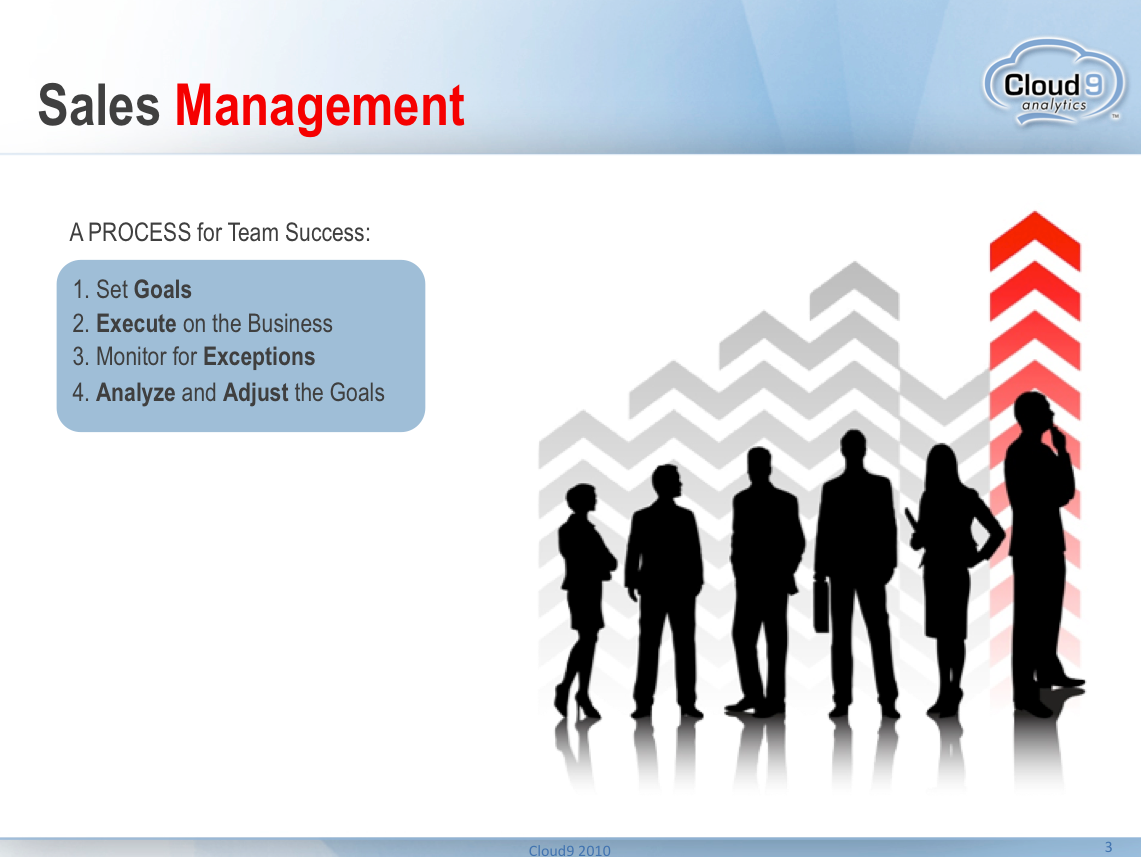Revenue Velocity Forum Offers Sales Enablement Strategies
- Published in Feature Articles
As revenue performance management continues to gain traction in the automation space, Cloud9 Analytics introduced the Revenue Velocity Forum, an educational event focused on providing revenue-driven strategies. Sales empowerment and 2.0 tactics were key themes at last week’s event in Boston.

“In a recent survey, we found that just less than half of all forecasted sales deals result in wins,” said Jim Dickie, Managing Partner of CSO Insights, in a press release. “Forecasted close rates are at a 16-year low, and the cost of not investing in solutions and best practices to accelerate revenue is dangerous for modern enterprises. As we enter into the home stretch for 2010, we encourage all sales and marketing managers to join us and consider new ways to drive sales effectiveness for 2011.”
According to Dickie, there are four levels of sales processes: random, informal, formal, and dynamic. Moving through these stages from left to right, sales can become more predictable and more successful. Dickie cautioned marketers to be aware of “the cost of doing nothing.” Dickie suggested marketers define Perfect Prospect Profile, or persona, which will ultimately help discover more opportunities.
Breaking down the sales manager’s job, Senior Director of Customer Experience Tracey Kaufman said the ultimate objective for sales management is to set goals; execute on business; monitor for exceptions and analyze/adjust goals.
While traditional practices include “rewarding superstars,” and “measure & punish quarterly,” Kaufman said that approach isn’t working. CSO insights stats frame the ineffectiveness, as only 44% of forecasted deals are won, only about 50% of reps are making quota, and sales teams are generally coming up 12% short on overall plan.
Data-Driven Results
As the marketing industry is more technologically focused than ever, there are more data and metrics available to help marketers leverage analytics to proactively uncover risks and opportunities. Kaufman said Sales Management 2.0 can be characterized by “Detect and Correct,” analyzing what data tells marketers, whether they should worry, and the next plan of action.
The model for Detect & Correct encourages marketers to use pipeline velocity as a framework for organizing information to map out an appropriate path; monitor variance and change (to see what is changing and if that deviates from plans); and to ask questions that can yield actionable answers on topics like skills, market and alignment issues.
Kaufman offered the following questions for actionable results:
- Are the right people in the right roles? (Talent)
- Are people well aligned behind the goal with the right incentives? (Behavior)
- Are there training, productivity or ramp issues? (Skills)
- Has something happened in the market to change the value equation for our project? (Market)
Pipeline Velocity Drivers
Kaufman broke down several velocity drivers, including deals that are affected by inbound and outbound marketing efforts, and deal sizes that are affected by product pricing and target customer profile. By leveraging the data gleaned from the equation Deals x Conversion Rate x Deal Size Selling Time, marketers can align themselves with benchmarks, and see how performance changes over time. Once marketers detect a problem, Kaufman said, they can ask the right questions and correct the issue accordingly.
Kaufman said these practices can help marketers be more proactive to determine which forecasted deals have changed, which are not being properly managed, and which reps need extra coaching and assisting. “Together with strong leadership and effective coaching, moving to a more dynamic approach for sales management will optimize resources, improve forecast accuracy and accelerate revenue growth,” Kaufman said.

